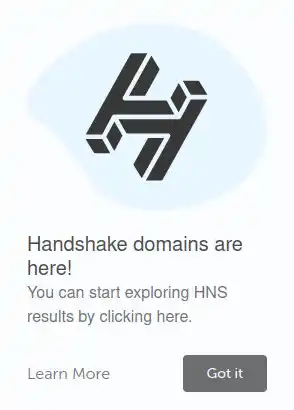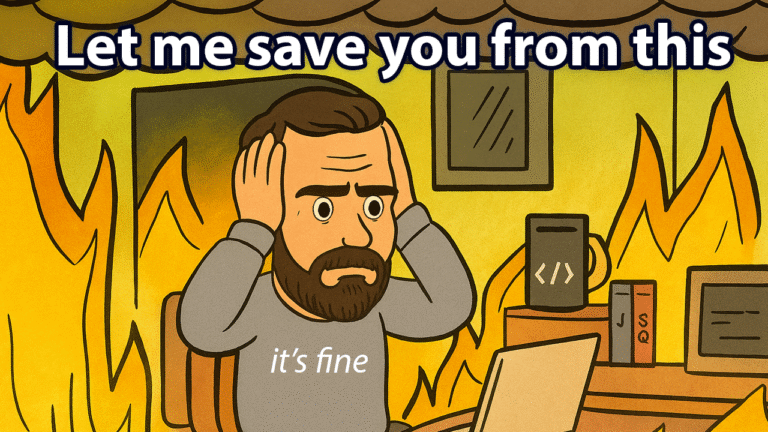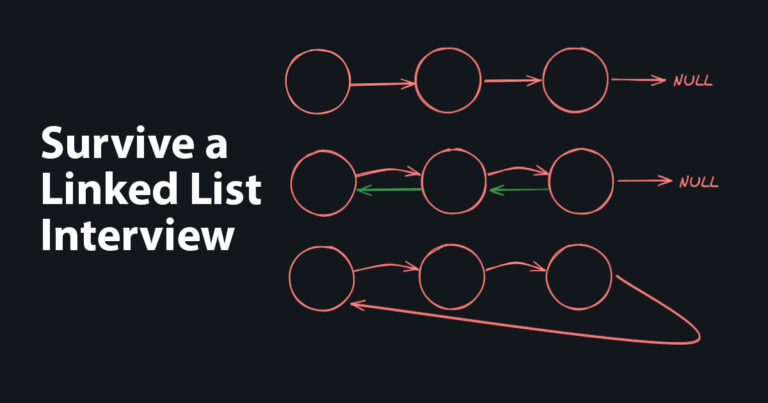With 19,185 blockchains listed on CoinMarketCap and crypto related scams appearing in the news almost daily, it is easy to dismiss an interesting project. As an avid web 2.0 user and developer, I have been mostly ignoring “revolutionary” web 3.0 claims.
The other night I was browsing my favorite domain name registrar when I came across a mysterious “HNS button”. I hovered and the following message appeared: “Handshake domains are here!”. My curiosity got the best of me, so I started my research and ended up really liking this project.
Handshake is a single purpose blockchain that explores ways to compliment existing Domain Network System (DNS). In order to understand my interest in Handshake, we should first talk about our current DNS system.
Why do we need DNS?
Computers talk numbers. Humans talk natural language. DNS is a bridge to translate language into numbers. When you ask your browser to go to hdomain.info, your computer will ask a DNS server to translate that domain name into Internet Protocol (IP) address. This IP address is how your computer going to know how to reach the domain that you’ve requested.

Who controls existing DNS?
Current DNS is a decentralized protocol designed to run on many servers all over the world. This decentralization does converge to 13 root name servers operated by 12 independent root zone operators. (source) Internet Corporation for Assigned Names and Numbers (ICANN) is a nonprofit organization that oversees the operation of root name servers and delegates top-level domain (TLD) operations to various organizations. For example, .com is owned by Verisign and I am merely renting `romantaylor` second level domain (SLD) from them. In other words when you “buy” your SLD, you’re actually renting it for a period of 1 to 10 years.

Our current DNS system is relatively centralized despite running on a decentralized protocol. Is it a bad thing? Not necessarily but HNS has the potential to make existing DNS even better.
What is Handshake (HNS)?
Handshake is a decentralized naming protocol where anyone can participate in managing root domain naming zone. Handshake is not trying to replace DNS. Instead Handshake is an experimental project that is exploring ways to compliment the existing system by enabling regular people to own and manage top level domain names among other features.
You can think of HNS blockchain as a distributed root zone file where anyone can participate in managing this file.
Can HNS and existing DNS coexist?
Yes. HNS does not aim to replace existing DNS. It is meant to replace (currently semi-centralized) root zone file. As a result HNS must co-exist in our current namespace. In order to accomplish this compatibility, following steps were taken by HNS developers:
- Existing Top Level Domain Names are reserved (meaning you can’t bid on com/ or edu/)
- Approximately 90,000 existing domain names are also reserved. These were selected based on Alexa.com top web site rankings. (See HNS FAQ for more info)
I view this compatibility as a huge plus and it is one of the reasons I really like this project. web 3.0 projects that play nice with existing infrastructure are my cup of tea because web 3.0 is unproven and is not ready for prime time while web 2.0 is just too convenient and well executed. Perhaps there is room for web 2.5 with projects like Handshake.
HNS is awesome
Because it is cool to be able to own your personal TLD instead of renting an SLD. It’s a low cost (and low risk) way for anyone to enter the wild west of decentralized internet.
Currently there are three ways to try it out (that I know of):
- The easiest way is to use Namebase. They also have a lot of useful information about Handshake blockchain that will help you get started.
- If you have some experience with crypto and prefer to manage your own keys, you can try BobWallet.
- Lastly, you could spin up a full node and manage your wallet using command line.
TL;DR
Handshake is by far my favorite decentralized web project at this time. It is not attempting to replace an existing DNS system. Instead it is trying to compliment it. Existing DNS already runs on a decentralized protocol so this is not a revolutionary idea… It’s a cool one because now you can own a top level domain instead of renting a second level domain.




I’m new to this. Thanks for sharing!